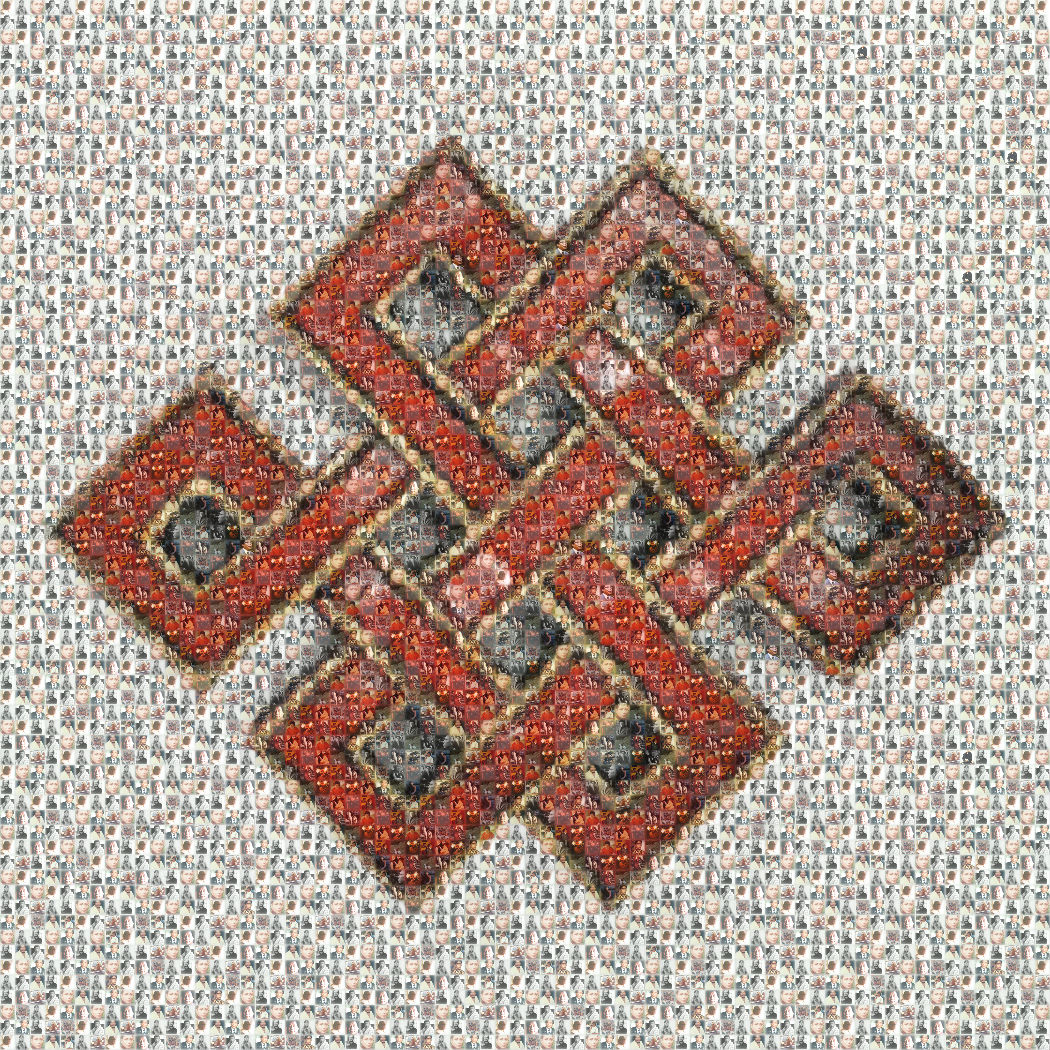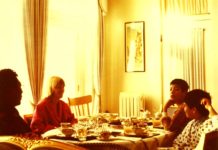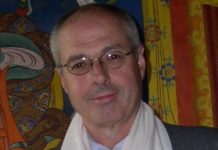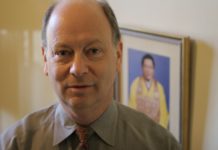Part One:
Part Two:
Part Three:
Part Four:
In this special report, Sarah Coleman takes us on a tour through the thirteen three-month seminaries led by Trungpa Rinpoche in the 1970s and 80s. From Teton Village, to Rocky Mountain Dharma Center, Sarah gives us her raw impressions of the place, the teachings, the students, the era, and the teacher.
Please keep in mind that these are one person’s recollections of events that took place 30 to 40 years ago. The environment around Trungpa Rinpoche was charged in such a way that, even at the time, one person’s experience was often quite different from another’s; and as we’ve seen over the years of working on the Chronicles, long-term memory can be a tricky thing. Others, no doubt, remember the same events quite differently.
Nonetheless, Sarah’s account is remarkable. In a little under two hours she tells a single story spanning thirteen years, full of insight and colorful details. Her story also provides a very good start toward documenting the history of Trungpa Rinpoche’s seminary mandala — a transformative container for hundreds of students, and ground zero for the explosion of dharma he ignited in the West.
In the context of Mosaics, Sarah’s seminary tour is particularly interesting because it illuminates the context for the root teachings that are now available to the general public for the first time as the Profound Treasury of the Ocean of Dharma.
Sarah’s recollections are presented here in four parts. Part One: The 1973 Seminary, Part Two: The 1974-1976 seminaries, Part Three: The 1978 and 1979 seminaries, Part Four: The 1980 through 1986 seminaries.

Readers’ Comments
Wonderful to hear Sarah’s voice. I had heard and read about Rinpoche’s leaving the 1973 seminary in the middle of the talk, but I’d never heard about how he came back. An extraordinary story–thanks (Sarah, Julia, Chronicles)! Can’t wait for the next installments. -John Sell, Halifax
***
The synchronicity of Khyentse Rinpoche image’s affect on the 73 Vajrayana Seminary with my current circumstances is uncanny! Details would only dilute what I’m feeling. Many thanks, with love – Kyle Curley
***
Sorry, but the “memories” of 1975 seminary, from one who was not present, are quite not accurate! -Richard Assaly
***
Interesting to hear Sarah’s description of why Rinpoche was so obviously unimpressed by Lake Louise and that section of the Rockies. I’d wondered about that since 1979 as I was at that seminary. (I attended the 1979 and 1983 seminaries, the latter as a teacher of what was commonly referred to as the abhidharma course.)
She mentioned that First Nations/aboriginal people didn’t live at Lake Louise. A quick check on the internet showed that the Nakoda (Stoney) did live at what is now Banff National Park and had a name for what we call Lake Louise – “Lake of the Little Fishes”.
However, something I didn’t know was that all First Nations people were formally “excluded” from Banff National Park between 1890 and 1920 and were not officially “welcomed back” until 2010:
http://old.fnbc.info/stoney-nakoda-nation-welcomed-back-banff-national-park
http://www.rmoutlook.com/article/20140327/RMO0801/303279998/powerful-lobby-helped-isolate-nakoda-from-banff-park
Leads me to wonder if excluding the Nakoda from the park caused the dralas to depart.
-Palden McLennan
***
Much thanks to Sarah and the Chronicles for doing this. Wonderful to hear her recollections. She got me inspired to pull out my seminaries transcripts (1978) and re-read them! – Warner Keeley
***
The danger you get when you rely on one person’s memory of events, such as seminary, is that it can’t possibly be accurate. My recollections of ’74 seminary are quite different from Sarah’s, as I’m sure others’ might be. She seems to be, in that case, putting a pretty face or romanticizing what seminary was like. One point is, yes, there were some more zen students there, but hardly anyone sat in meditation very much….David Sable, and one other person were in the shrine room most of the time. We’d go down to a bar and drink and dance for two hours before the talk, because we knew Rinpoche was always two hours late for his talks. One time, he came on time, and there was no one there. And the predominance of the students were administrators from Boulder, who didn’t practice much. The dining room was terribly full of constant loud chatter. If you want to give an accurate picture, you might include the fact that Rinpoche suggested that people that went to the first three seminaries should do it again because the form had not yet been truly established. It’s like the movie Rashomon, where each observer of a situation gives a completely different account. A better format might have been taking a number of people as a sample and letting them all have a bit of a say. Maybe it doesn’t matter, but if capturing history is your goal, I don’t think this is a very good job. Not that it’s not interesting.
Only the best,
John Tischer
***
Some memories of 1982 seminary: Since Rinpoche taught from the Oryoki chants, much in his class was described in terms of the historical Buddha. Ani Pema was in charge of practice and study, and the Sawang was a student in her discussion group for Rinpoche’s class( just couldn’t figure out why she kept calling him “Sir”, because most of us hadn’t been to Kalapa Assembly yet). Allan Schwartz was the coordinator. Kalu Rinpoche came to visit Rinpoche, and the next day he addressed the seminary. Some of us left for a few days to go to Boston and take Shambhala Level 5 with Rinpoche. Remember coming back and it seemed like a miracle to be able to return. The next night he give an ego-breaking talk about Vajra Hell. After that, as I recall, things were more mild.
Thank you, Sarah, Julia, and Chronicles for these memories. Would be curious to hear more. (Personal thought: How I wish as an overwhelmed new student at Boston Dharmadhatu in 1976-78, I had known some of this background!)
-Ellen Berger
***
I’ve unearthed a number of photos I took at 1980 Seminary. All are of the participants and a number of oryoki. If you are interested, I can send you a digital album. -Allan Novick
***
Thank you Allan! Here are Allan’s photos from 1980. -the Chronicles











